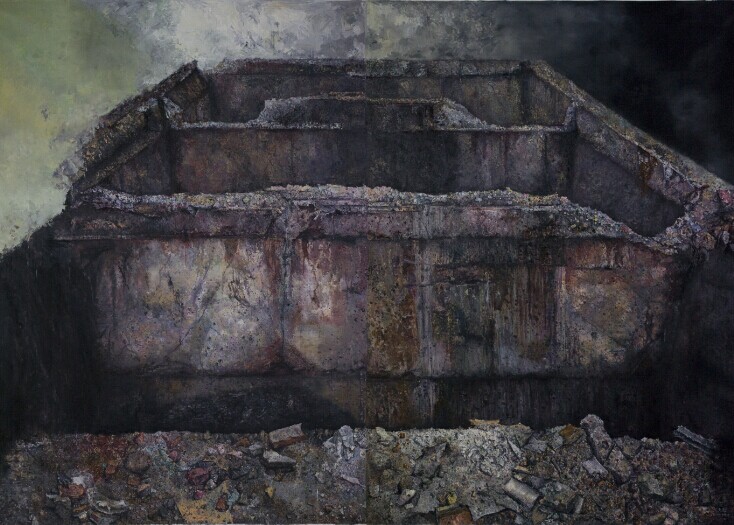
- Interpreting Huang Liang's Llife and Paintings
Born in 1982,Huang Liang graduated from the Department of Oil Painting,Lu Xun Academy of Fine Arts, an art school known for its emphasis on the basics of painting. Huang's diverse artistic styles manifested in his works demonstrate a unique kind of delicateness as well as emotions rarely visible in Chinese contemporary art. This uniqueness, however, stems from Huang's painful experiences early in life. Ever since he was young,Huang had been plagued by primary pulmonary tuberculosis and was even suspected of being afflicted with lung cancer. Before he turned twenty, Huang had already suffered severely from this serious illness and even encountered a near-death experience. Under this light,Huang tended to see the world from a different perspective while perceiving his surroundings with a heart more sensitive and delicate than others.
Viewing Huang's works is like appreciating the development of the art of painting but also like studying and interpreting the life of a young artist. Huang started from the portrayal of his personal experience and then moved on to the romantic expression of his personal convictions. Be it the Phanerosis collection,in which Huang enlarges parts of the body to display the beauty of abstract painting,or his newest collection Pit, in which Huang combines his techniques with personal experiences to exhibit a period of scarred history, what remains unchanged is that an unyielding sense of loneliness and melancholy always linger in his works, while feelings of mysteriousness and depression are prevalent in his desolate and silent images.
Created in 2010, Pit showcases the forceful strength of life with the artist's sincere emotions. The so-called "pit" bears the weight of history while transcending the boundaries of time and space to preserve the wounds and scars of time and of life. Pit bears resemblance to Phanerosis No. 1 (2008) (in which the artist portrays in an abstract manner the insides of the body), as both pieces show Huang's experience and reflections after struggling in the face of death. Imprinted in the viewers’ mind and body, these works illustrate Huang's absolute honesty to art and life,as well as the interaction between his struggle for life and his transcendence.
Compared to other large-sized works such as Pit, Colored Arch, d Phanerosis, Huang's smaller-sized paintings exemplify the young artist's ambition to be aesthetically innovative. These smaller-sized works were named after their actual sizes and served as Huang's diary, keeping track of his moods through various styles in brushwork as well as colors. One example is 38.5.28, which is the portrait of the beloved wife of Adolf Hitler, Eva Anna Paula Braun(1912-45), the beautiful woman who accompanied Hitler till his death. Eva is anxious and mysterious in the eyes of Huang, who portrayed her by creating a "wiped-paint" effect as well as scar-like marks on canvas. By doing so, Huang was able to infuse spirit and soul into this extremely small painting.

Flower Arch, Oil on Canvas,1.45x2.1m, 2.68x1.8m, 2009

Phanerosis No. 1, Oil on canvas, 300 x 200cm, 2008

38.5.28, Oil on Canvas, 38.5 x 28cm, 2010
What is the meaning of painting? To Huang, painting is a means of expressing oneself and a means of self redemption. Images created by Huang include window panes of a building which beam with light, a doorway through which one sees a few streaks of light, a suitcase filled with books and imagination, or old jewelry which has been rediscovered from old memories. In these lonely and depressed images, Huang used different kinds of brush strokes which incorporate his personal experiences as well as beautiful yet sad colors. As a result, we have seen, though in a rather obscure manner, both the sufferings of the artist as well as how he found a way out of afflictions imposed on him.
Huang does not try to please his viewers visually, yet his sincerity towards life and art forces us to become more like him. In turn, we are brought to reflect upon ourselves and face the important issues of life. The images which depict Huang's heart and soul resemble songs which sing of men’s sufferings. Though the songs may be low and hoarse, they remain unstoppable melodies, forever lingering in the air. In this light, viewing Huang's works definitely sublimates us emotionally and spiritually to a higher level just as was mentioned in Aristotle's Theory of Tragedy.
